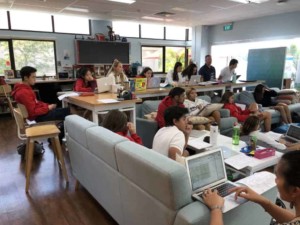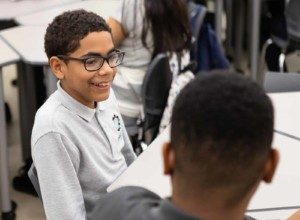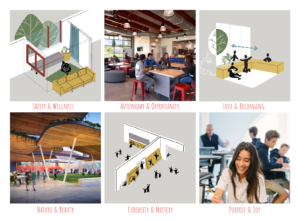Elements of High Agency School Environments

It is always a particular delight to have the opportunity to talk with Tom Vander Ark, as I did in a recent interview about what high agency environments look like. After working with dozens of principals and thought leaders like Tom, I’m coming to the conclusion that a successful school-based learning environment has the following attributes:
- Student-centered pedagogies and instructional approaches that foster intrinsic motivation and student agency
- An environment where every child is known well and respected by a caring adult
- Data-informed instruction
- A culture of continual improvement that fosters agency and intrinsically motivated professional development among teachers as well as supporting innovation and experimentation
Tom touches on these key attributes in his thoughtful discussion of high agency school environments. My paraphrased summary of our discussion is below, but I strongly recommend the full video of Tom’s comments.
Why is student agency or ownership important?
Tom: When I wrote Getting Smart I said that this digital revolution was going to improve customization, motivation, and equalization. There could be a customized learning path for all students, and if we did it with equity in mind we could both help struggling students and blow the top off with students who are ready to learn. Agency runs through all three of those.
In a high agency schools, students own their own learning – they know what they are learning, why it is important, what they are going to learn next, how they were going to demonstrate their learning.
If we can provide experiences that are intrinsically and extrinsically motivating for students, we can help American kids work much, much harder. The pervasive problem in American schools is simply boredom.
Students who are not well supported don’t come to school with a sense of efficacy or a sense they are entitled to own their own learning. Agency is key to equalization, to helping all kids appreciate the fact that they can and should own their own learning.
What is the relationship of agency to learning?
Most of American schools are high compliance, low agency environments. There are advantages such as students sitting in rows, doing what they are told, they behave, and a high compliance school can create relatively high levels of rote learning, but I don’t think I’ve ever seen a high compliance environment that promoted deep learning.
High compliance doesn’t create the deep skills we are looking for today. You have to have a sense of agency in order to create those deeper skills’.
What does a school look like that supports ownership?
I think about three things: Culture of agency, an advisory process and instruction. You can tell immediately whether a school has a high agency culture based on the relationships between adults and students, whether students are respected as learners. High agency begins with culture.
Most people don’t think about and advisory system – a pairing of an adult and a student for the time that student is at that school who meet at least two or three times a week. The adult has a chance to build a relationship with a student, know who they are as a person, and become an advocate for that student as a learner. Without these powerful sustained relationships, you can’t create a high agency experience.
But it really comes down to what happens in the classroom. A high agency school gives students some voice and choice including at least some path flexibility. Students have some control over pace, some control over path, and the opportunity to present and publish to a real audience.
Students also need a portfolio to capture their publications in a collection of “personal bests” that can be shared with employers and secondary institutions.
How will technology continue to advance education?
An interesting area is machine learning. In the book, the Master Algorithm, Domingues talks about how postsecondary education is continuing to operate in silos but increasingly is talking to machine learning.
Machine learning is an important development in adaptive learning with products like DreamBox and i-Ready are good examples of a recommendation engine that’s driven by a learner profile that sequences a set of learning experiences. This customizes the path forward. I think what we will see is informing the curation of personalized pathways. The link to this high agency environment is that in addition to being partnered with a caring adult, if you’re partnered with a smart algorithm that’s informing this dynamic duo I’m really confident that it’s going to become much easier to create powerful learning trajectories for all students.
For more check out:




0 Comments
Leave a Comment
Your email address will not be published. All fields are required.